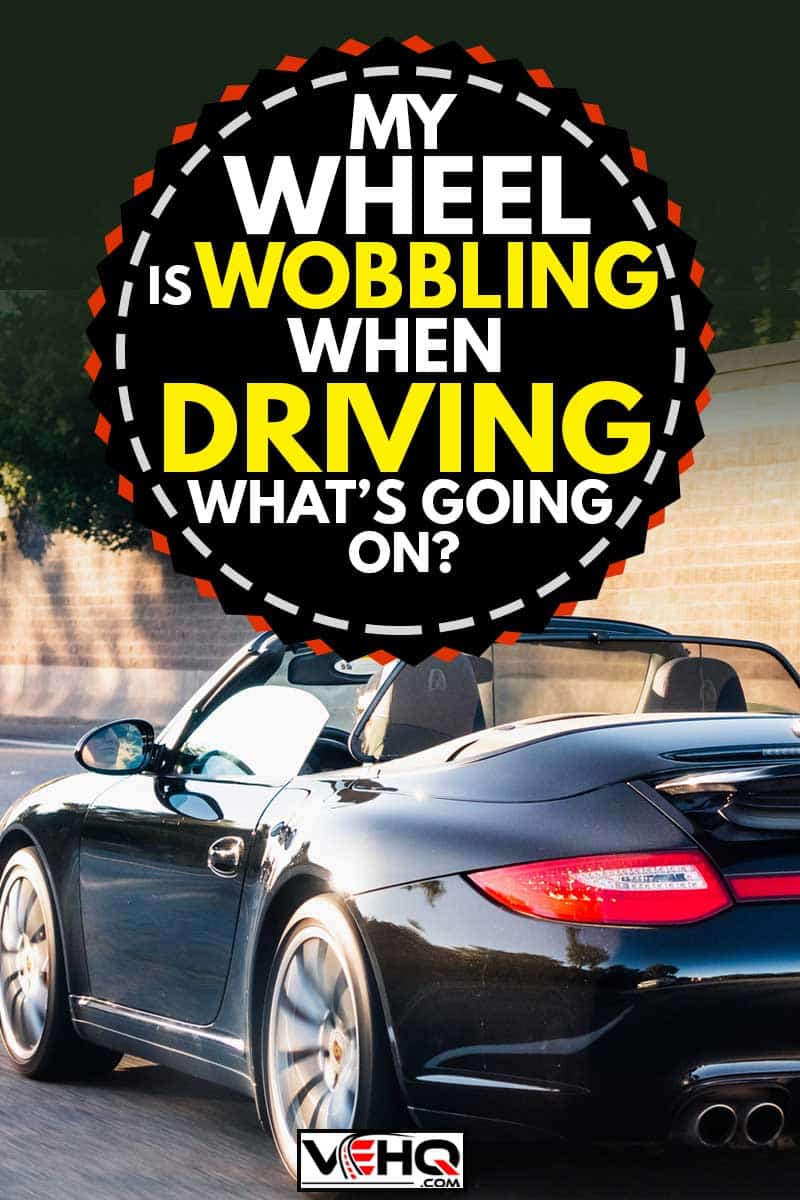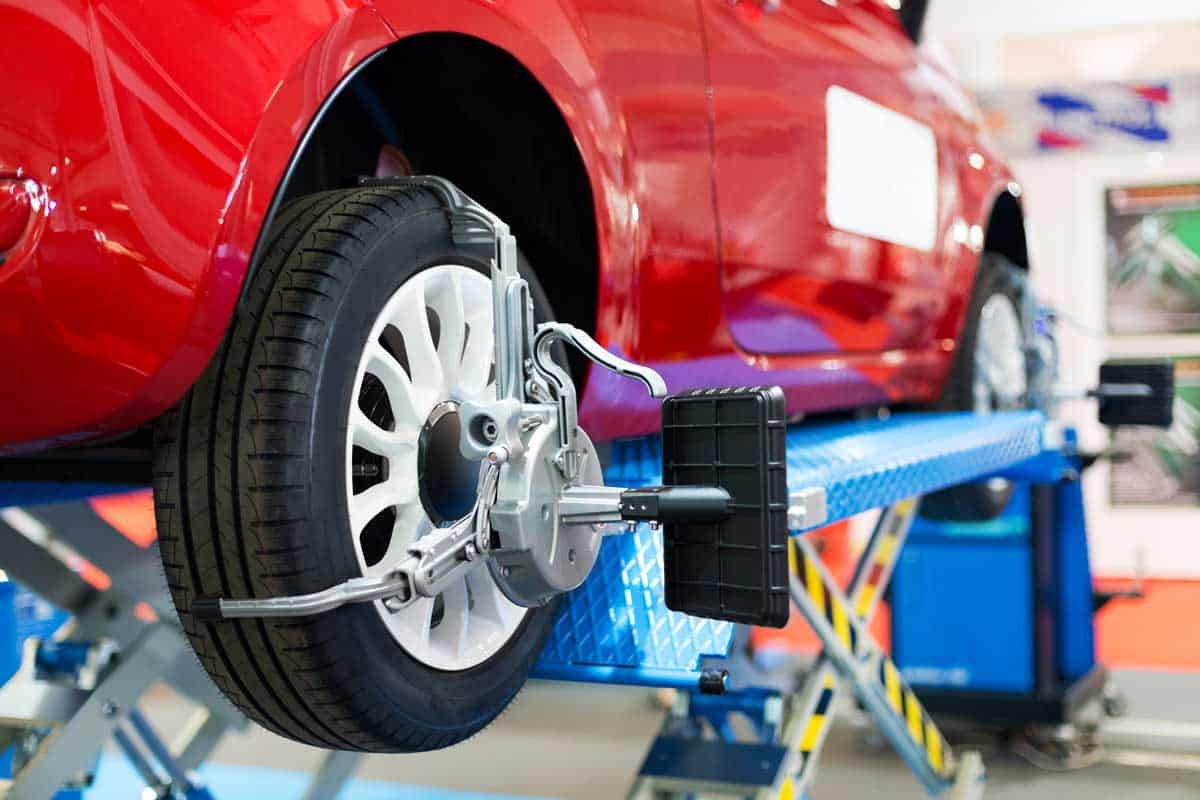 You rely on your car’s four wheels to safely get you to your destinations every day. Yet the last time you got in the car, the wheel began wobbling a little. You immediately pulled over to the side of the road, stopped the car, and waited. Then the next day, the same thing happened again. What’s going on with your car’s wheel? We did the research to find out what could be causing this to happen.
You rely on your car’s four wheels to safely get you to your destinations every day. Yet the last time you got in the car, the wheel began wobbling a little. You immediately pulled over to the side of the road, stopped the car, and waited. Then the next day, the same thing happened again. What’s going on with your car’s wheel? We did the research to find out what could be causing this to happen.
Your vehicle’s wheels may wobble for the following reasons:
- Your tires have flat spots.
- The alignment is bad.
- The wheel is cupped or scalloped.
- The wheel has bent.
- The tires are imbalanced.
- The driveline or transmission is damaged.
To get to the bottom of your tire wobbling issues, we recommend you keep reading. In this article, we’ll explore misalignments, bent tie rods, and wheel imbalances and how these problems contribute to wobbly tires. We’ll even discuss the dreaded death wobble and what to do about it.
Remember - no online advice can ever replace the opinion of a qualified mechanic that actually checks your car. The information in this post is strictly for educational purposes. If your car's wheel is wobbling, call your auto shop and follow their advice.
Can Bad Alignment Cause the Wheel to Wobble?
Your vehicle has a suspension system that’s attached to the wheels. This system should remain in alignment for a safe driving experience every time. Thus, when you talk about wheel alignment, also known as tire alignment, it relates to the vehicle’s suspension system and not the wheels.
Over time and as you rack up more miles in your car or truck, the alignment of your vehicle could change for the worse. If you feel vibrations at the steering wheel when you’re driving, that’s one sign of bad alignment. Another is when your vehicle feels like it’s pulling you towards the left or right, and your steering wheel won’t center, even if you’re driving straight down the street. You may notice the tire treads wear down unevenly as well.
To read more about other causes of your vehicle pulling away from you, check out this article: Car Pulls To One Direction When Driving – What To Do?
If you sense your vehicle’s wheel alignment is out of whack, don’t wait long to see a mechanic. The uneven tire tread can cause the tires to begin wobbling, which is its own kind of danger.
Can Bad Tie Rods Cause Wobbling?
Another component of your vehicle that could contribute to tire wobbling is the tie rod. The tie rod attaches the steering knuckle to your front wheel’s steering rack. Tie rods have both an inner and outer end as well as an adjusting sleeve.
The other parts of a tie rod include a bearing casing within a rubber dust boot, a threaded bolt for attaching to your steering wheel, and shield bushings to prevent debris buildup. It also holds grease fittings for bearing rotation, a shaft that sends motion to the tie rod’s ball studs, and the bearings themselves. These maintain steering control on uneven terrain.
When you turn your steering wheel in your car, the mechanism within the tie rod moves. This activates the tie rod to rotate your steering wheel so it can turn in the direction you want to go. If the tie rod goes bad, you’ll notice it first in your steering wheel, as it won’t cooperate with you.
You may also hear squealing sounds each time you turn your steering wheel, your wheels (tires) will wobble, and, in worst-case scenarios, your ability to steer is wholly taken from you. This can lead to an accident, so you must get the issue addressed immediately.
Can Unbalanced Tires Cause Wobbling?

As a car owner, you also have to take your vehicle in now and again to get the tires balanced. This basic mechanical tune-up ensures that your wheel-tire set has even weight distribution throughout. Otherwise, you’re dealing with issues such as steering wheel vibrations, a decrease in fuel economy, and tires with treads that wear down more quickly than usual.
Oh, and wobbling can occur too. That’s because a well-functioning wheel-tire unit with even weight distribution allows your tires to travel seamlessly, keeping the wear consistent across all four tires. Once the treads begin wearing down more on some tires than others, the tires tend to hop and wobble. This is how you get the vibration in the steering wheel as well.
By taking your vehicle to a mechanic, they can balance your tires. First, they put the tire on a tire balancing machine. Then, the machine spins your tire to get vibration measurements. If the mechanic detects an imbalance with the tire, they may add more weight to redistribute it or otherwise rebalance the tire, so it’s safe to use.
What Does the Death Wobble Mean?
Finally, as promised, let’s talk about the death wobble. This goes by such names as the speed wobble, tank-slapper, or shimmy, but all refer to the same thing. That is, your whole vehicle begins shaking because the steering wheel’s oscillation changes rapidly.
When your vehicle is in the midst of the death wobble, maintaining control becomes just about impossible. This puts you at a very high risk of a serious accident.
Besides cars and trucks, skateboards, bicycles, and motorcycles are all at risk of the death wobble, as are most vehicles.
Any number of causes can contribute to the death wobble, which can make diagnosing the issue a bit of a challenge. If you’re not up to the job yourself, your mechanic will gladly look over your vehicle to figure out what may have gone wrong.
They’ll focus their attention on the vehicle’s unit bearing, steering box, ball joints, tie rod ends, drag link ends, and track bar bolts. Let’s talk about some of these parts and what they do:
- Steering box: The steering gearbox or steering box includes a series of gears that convert steering inputs into linkage that makes the wheels move.
- Ball joints: Within the suspension system are ball joints. These front-suspension components work alongside bearings, bushings, and links to operate your vehicle’s front two wheels.
- Drag link ends: The drag link end is part of the steering linkage in the steering box. It allows a steering arm and a pitman arm to move, which then sends momentum to the tie rod so you can effortlessly steer your vehicle.
- Track bar bolts: The track bar itself keeps the axis assemblies from moving laterally. It’s part of the suspension system. The bolts within the track bar keep this crucial component secure.
Your mechanic will start by looking at the track bar, as its side bolt can come loose. If that happens, then the track bar tends to affect the mounting hole, warping it so that part stops working as well. They’ll tighten any screws and inspect the bushings of the track bar as well, for these can wear down and become less effective.
The tie rods are the next component that could lead to the unwanted death wobble. The ends should be secure, as should the rod itself. The mechanic will look for missing parts on the ends of the tie rod, such as rubber boots, and replace these as necessary. You may even need a whole new tie rod, depending on the extent of its damage.
They’ll follow that up with an inspection of the ball joints, as the joints can experience grease leaks from their rubber boot housing. That’s a sign you need new ball joints, as is damage to the boot from time.
If you still can’t figure out what’s causing the death wobble, at this point, it’s probably the wheel bearings. That’s especially true if your death rattle brings with it a lot of vibration. A fresh wheel bearing is recommended.
It’s also a good idea to get your vehicle realigned, and its wheels rebalanced. One or a combination of these solutions should put the days of the death wobble behind you.
For other dangerous driving situations and what to do, read this: What Causes Brakes To Lock Up While Driving?
Please don’t try driving if your vehicle has a death wobble. Pull over immediately and get to a mechanic ASAP, even if you have to tow the vehicle.
Conclusion

If one or more of your tires wobbles while you drive, this is not a problem you want to ignore. At any point, you could lose control over your vehicle, especially during the death wobble. Take your car to your trusted mechanic, who will probably recommend new suspension parts or a realignment. Stay safe!

Thanks for the article mate.
My car was having tire wobbling later I have gone to a mechanic and he told me that was because of bad tie rods. After reading this article I have found that bad tie rods can cause wheel wobbling.